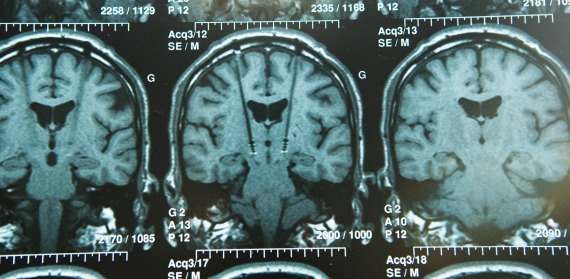Guest post by Dr Anna Ashworth
Sometimes you don’t know where your work will take you next. I’ve been spending the last few months at a lab stimulating people’s brains. The fancy name for it is transcranial direct current stimulation, or tDCS; basically, it means sending a weak electrical current to a brain region you’re interested in studying. Sometimes this feels a bit tingly, like pins and needles; but many people don’t feel anything and wonder if it’s actually working! Look, here I am modelling the kit:
What makes this project particularly out-of-this-world is that our Brain, Belief and Behaviour research group is using this technique to find out about the biological roots of spiritual and religious ideas (or lack of), and the impact that beliefs and spiritual practices like prayer or meditation may have.
Activity in the brain can be modified by using anodal (positive) stimulation to make the region more active, or cathodal (negative) stimulation to make it less active. tDCS has previously been used to increase attention and mathematical ability; we aim to see whether it can moderate how people implicitly think about beliefs. Temporarily of course; the effects last for around one hour.
During brain stimulation, participants complete some computer tasks where we measure speed and accuracy of assessing beliefs in God and the supernatural. This allows us to tap into implicit beliefs – i.e., beliefs that don’t need to be thought about consciously – to see whether activation of a particular brain region leads to changes in people’s performance on the tasks.
The study is still in progress so don’t feel shy to come forward if you fancy trying out something completely different! Watch this space for results as they come out or, to find out more, email BeliefLab@coventry.ac.uk.
For more information, visit the Neurostimulation of Belief project page.





Comments are disabled